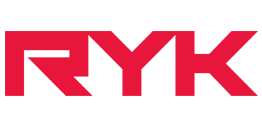 In the modern era, 3D printing is no longer a cutting-edge technology. This method—which involves creating digital models via computer software and then producing physical objects—has found applications across numerous industries. However, one critical component often overlooked is the linear module, a key transmission part in many 3D printing systems. How exactly do linear modules contribute to 3D printing? Let’s explore this with RYK Motion Technology.
In the modern era, 3D printing is no longer a cutting-edge technology. This method—which involves creating digital models via computer software and then producing physical objects—has found applications across numerous industries. However, one critical component often overlooked is the linear module, a key transmission part in many 3D printing systems. How exactly do linear modules contribute to 3D printing? Let’s explore this with RYK Motion Technology.
The Role of Linear Modules in 3D Printers
A 3D printer’s transmission system is complex, typically consisting of:
- A slider with an extrusion nozzle
- A base with a printing bed
- A top crossbeam connecting the structure
- Sliding seats (Slide I) mounted on support rods, connected via parallel sliding rods and a linkage rod
- A fixed block on the linkage rod, equipped with a vertically connected rack
- A lifting motor with a pinion gear that engages with the rack
Additionally, a material spool (holding plastic or resin filaments) feeds into the 3D printer. The filament is melted and extruded through the nozzle, which is mounted on a slider that moves along the sliding rods in X, Y, and Z axes, enabling precise layer-by-layer printing.
Why Linear Modules Are Essential for High-Precision 3D Printing
Modern linear modules offer exceptional positioning accuracy, especially when paired with servo motors and drives. They enable efficient movement of printing materials in multi-axis configurations, allowing complex 3D printing operations.
Key advantages of RYK Motion’s linear modules in 3D printing include:
✔ Modular design for flexible integration
✔ High-precision ball screws and guide rails for smooth motion control
✔ High-rigidity materials ensuring durability and stability
✔ Superior repeatability, parallelism, and low starting torque for precision printing
For more insights into motion control in additive manufacturing, check this resource from ScienceDirect on 3D Printing Technologies.
How to Optimize Linear Module Configurations for 3D Printing
At RYK Motion, we provide customized linear module solutions based on specific application requirements and environmental conditions. By combining different types of sliding modules, we help optimize 3D printer performance for:
- Faster printing speeds
- Higher accuracy and repeatability
- Improved structural rigidity
Interested in integrating high-performance linear modules into your 3D printer? Consult our sales engineers for a tailored solution!
For further reading on motion systems in additive manufacturing, refer to NASA’s Research on 3D Printing in Aerospace.

